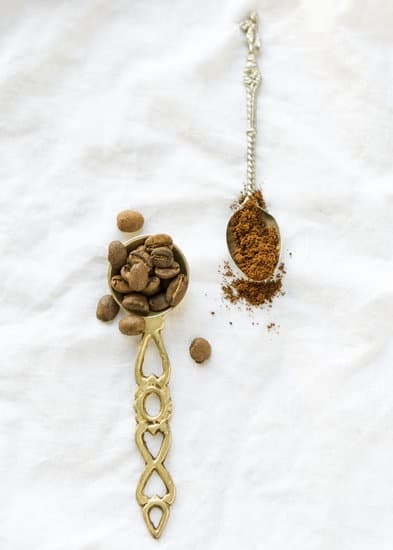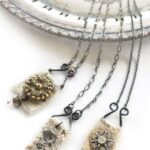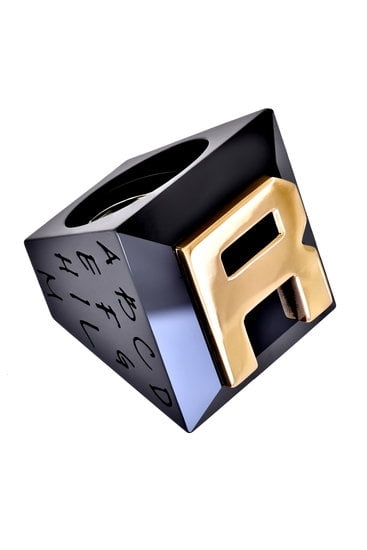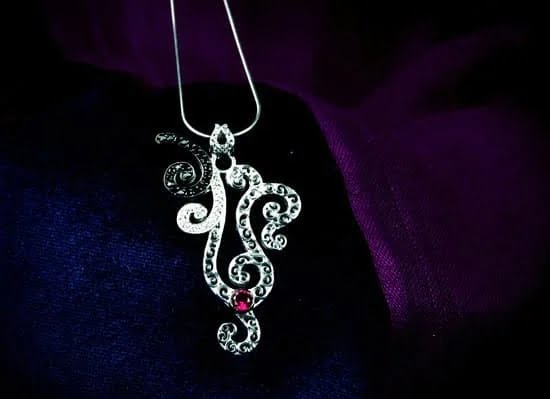Are you wondering how to price your beaded jewelry? Determining the right price for your handcrafted pieces can be a challenging task, but it is crucial for the success of your business. Understanding the value of your beaded jewelry is essential in order to establish a pricing strategy that is fair to both you as the maker and your customers.
When it comes to pricing your beaded creations, there are various factors to consider. From the cost of materials and labor to overhead expenses, each component plays a role in determining the final price tag of your jewelry pieces. Additionally, analyzing competitor pricing and researching your market can provide valuable insights into where your products stand in terms of value and pricing within the industry.
In this article, we will delve into the intricacies of pricing your beaded jewelry, covering topics such as calculating costs, different pricing strategies like cost-plus and value-based pricing, determining your desired markup for profit, handling discounts and sales while maintaining margins, and effectively communicating quality to customers. By mastering these key concepts, you can set the right price for your beaded jewelry business and maximize its potential for success in the marketplace.
Factors to Consider When Pricing Your Beaded Jewelry
When it comes to pricing your beaded jewelry pieces, there are several important factors to take into consideration to ensure that you are setting the right price for your handmade creations. One key factor to consider is the cost of materials used in each piece. Be sure to calculate not only the direct cost of beads and findings, but also any other materials such as clasps, wire, or string that are essential in creating your jewelry.
Another crucial factor to consider is the labor involved in making each piece. While it may be tempting to underprice your items in order to compete with other sellers, do not undervalue the time and effort you put into creating each unique design. Calculate a reasonable hourly rate for your labor and include this in your pricing calculations.
In addition to materials and labor costs, it is also important to account for overhead expenses such as tools, packaging, marketing, and other business-related costs. These indirect costs should be factored into your pricing strategy to ensure that you are not only covering the cost of production but also making a profit. By carefully assessing all these factors, you can determine how to price your beaded jewelry effectively while still remaining competitive in the market.
| Factors | Considerations |
|---|---|
| Cost of Materials | Calculate direct and indirect material costs |
| Labor Costs | Include a reasonable hourly rate for labor |
| Overhead Expenses | Account for tools, packaging, marketing, etc. |
Research Your Market
When it comes to determining how to price your beaded jewelry, one crucial step is researching your market and analyzing competitor pricing. By understanding what other sellers in the same niche are charging for similar products, you can gain valuable insights into pricing trends and consumer expectations.
Start by identifying key competitors in your market and carefully examine their pricing strategies. Take note of the materials they use, the complexity of their designs, and how they position their brand in the market.
Once you have gathered information on competitor pricing, consider how your beaded jewelry compares in terms of quality, craftsmanship, and uniqueness. Determine whether your products offer additional value compared to your competitors, such as unique design elements, premium materials, or superior customer service. By conducting a thorough analysis of competitor pricing, you can better position your beaded jewelry business within the market and make informed decisions on how to price your products competitively.
In addition to analyzing competitor pricing, it is essential to consider factors such as target market demographics, current fashion trends, and seasonal demand when setting prices for your beaded jewelry. Keep in mind that pricing is not a one-size-fits-all approach, and it may require adjustments over time based on changing market conditions.
By staying informed about industry trends and continuously monitoring competitor pricing strategies, you can ensure that your beaded jewelry business remains competitive and profitable in the long run.
| Competitor Pricing Analysis | Key Insights |
|---|---|
| Identify key competitors in the market | Gain insights into pricing trends |
| Analyze materials used by competitors | Consider additional value offered by your products |
Calculating Costs
When it comes to pricing your beaded jewelry, one of the most important factors to consider is the cost involved in creating each piece. By accurately calculating your costs, you can ensure that your prices cover not only the materials used but also the labor and overhead expenses associated with running your business. Here are some key considerations for calculating costs effectively:
- Materials: Begin by determining the cost of the beads, findings, and other materials used in each piece of jewelry. Keep track of where you source your materials from and any fluctuations in prices that may impact your overall cost.
- Labor: Calculate how much time it takes to create each item and determine a fair hourly wage for yourself or any employees involved in the production process. Remember to take into account not only time spent on making the jewelry but also on tasks such as design, marketing, and administration.
- Overhead: Don’t forget about overhead expenses such as rent, utilities, packaging supplies, and marketing costs. These indirect expenses should be factored into your pricing to ensure that you are covering all aspects of running your jewelry business.
By taking a comprehensive approach to calculating costs, you can set prices that accurately reflect the value of your beaded jewelry while ensuring that your business remains profitable in the long run.
Once you have a clear understanding of your costs, you can then decide on a pricing strategy that aligns with your business goals. Whether you choose a cost-plus approach, premium pricing for high-end pieces, or value-based pricing that emphasizes unique design or craftsmanship, having a solid grasp on your costs will enable you to confidently set prices that attract customers while generating healthy profits.
Experiment with different pricing strategies and monitor customer response to find the right balance between affordability and profitability for your beaded jewelry business.
Remember that pricing is not set in stone – you may need to adjust your prices periodically in response to changes in the market or shifts in customer preferences. Stay informed about trends in the jewelry industry and be willing to adapt your pricing strategy accordingly. By staying flexible and continuously evaluating how to price your beaded jewelry effectively, you can position your business for success both now and in the future.
Pricing Strategies
When it comes to pricing your beaded jewelry, there are several strategies you can consider to ensure you are setting the right price point for your products. Understanding and implementing these pricing strategies can help you not only cover your costs but also maximize your profits in the long run. Here is a breakdown of three key pricing strategies that you can use for your jewelry business:
- Cost-Plus Pricing: This strategy involves calculating the total cost of materials, labor, and overhead involved in creating a piece of jewelry and then adding a markup percentage to determine the final selling price. This method ensures that you are covering all your expenses while also allowing for a profit margin. Here’s how you can calculate your prices using the cost-plus pricing method:
- Calculate the total cost of materials used in creating each piece of jewelry.
- Factor in the cost of labor, including the time spent on designing, assembling, and finishing each piece.
- Add any overhead costs, such as rent, utilities, packaging materials, and marketing expenses.
- Determine a suitable markup percentage (e.g. 50%) to apply to the total costs to arrive at the final selling price.
- Premium Pricing: With premium pricing, you set higher prices for your beaded jewelry than similar products on the market. This strategy works well when positioning your brand as exclusive or high-end within your niche. Customers who value craftsmanship, uniqueness, or exceptional quality are willing to pay more for premium products. Consider incorporating premium materials, intricate designs, or custom options to justify higher prices for your jewelry pieces.
- Value-Based Pricing: Value-based pricing focuses on determining the perceived value of your beaded jewelry in the eyes of customers and setting prices accordingly. This approach considers factors such as design complexity, craftsmanship quality, brand reputation, and customer demand when deciding on pricing levels. By showcasing the unique features and benefits of your jewelry creations effectively, you can justify higher prices based on the perceived value they offer to buyers.
By carefully considering which pricing strategy aligns best with your brand identity and target market preferences, you can establish a competitive yet profitable pricing structure for your beaded jewelry business. Experimenting with different approaches and analyzing customer responses will help you fine-tune your pricing strategy over time to optimize sales and profitability.
Remember that crafting a successful pricing strategy requires balancing affordability for customers with sustainable revenue generation for your business. By understanding how to price your beaded jewelry strategically through methods like cost-plus pricing, premium pricing, and value-based pricing, you can create a profitable business model that resonates with customers looking for high-quality handmade accessories.
Pricing for Profit
When establishing the pricing for your beaded jewelry, determining your desired markup is crucial in ensuring that you not only cover your costs but also generate a profit. The markup is essentially the amount added to the cost price to determine the selling price. It’s important to understand how to calculate this markup effectively to ensure that you are pricing your beaded jewelry competitively while still making a profit.
To determine your desired markup, you first need to consider all the costs associated with creating your beaded jewelry. This includes the cost of materials, labor, and any overhead expenses such as tools, packaging, and marketing. Once you have a clear understanding of these costs, you can then decide on a percentage markup that will allow you to cover these expenses and generate a profit.
There are various pricing strategies you can use when determining your desired markup. Some businesses opt for a cost-plus approach, where they add a percentage markup to their total costs. Others may choose premium pricing, setting their prices higher than competitors’ to communicate higher quality.
Value-based pricing involves considering the perceived value of your beaded jewelry in the eyes of your customers and setting prices accordingly. By carefully analyzing these factors and selecting the right pricing strategy, you can effectively determine your desired markup and set competitive prices for your beaded jewelry business.
Handling Discounts and Sales
When it comes to running a beaded jewelry business, one important aspect to consider is how to handle discounts and sales while still maintaining your profit margins. Offering discounts or having sales promotions can be a great way to attract customers and increase sales. However, it is crucial to ensure that these strategies do not compromise the profitability of your business.
To maintain your profit margins when offering discounts, you need to carefully calculate the impact of the discount on your costs and revenue. One approach is to set a minimum price threshold below which you will not offer any discounts. This ensures that even with a discount, you are still making a profit on each sale. Additionally, consider implementing limits on the duration or quantity of discounted items to prevent excessive loss.
Another strategy for maintaining profit margins during sales is to bundle products together or offer incentives for customers to purchase additional items at full price. This can help offset the impact of discounts on individual items by encouraging customers to spend more overall. By strategically planning your sales promotions and discounts, you can strike a balance between attracting customers and maximizing profitability for your beaded jewelry business.
Understanding Perceived Value
When it comes to pricing your beaded jewelry, one of the key factors to consider is the perceived value by your customers. The perceived value is what customers believe they are getting in return for their money and plays a significant role in their purchasing decision. Communicating the quality of your products effectively can help justify the price you set for your handmade pieces.
Quality Materials and Craftsmanship
One way to communicate the quality of your beaded jewelry to customers is by highlighting the materials used and the craftsmanship involved in creating each piece. Customers are willing to pay more for handcrafted items that are made with high-quality materials and attention to detail. Make sure to emphasize the unique features of your jewelry, such as rare gemstones or intricate beading techniques, that set them apart from mass-produced products.
Brand Image and Storytelling
Creating a strong brand image and telling a compelling story about your jewelry can also add value to your products. Customers are more likely to connect with brands that have a meaningful story behind them, whether it’s about your inspiration, design process, or commitment to sustainability. By building a brand identity that resonates with your target market, you can enhance the perceived value of your beaded jewelry and justify higher prices.
Customer Experience and Service
Finally, providing exceptional customer service and creating a positive shopping experience can further enhance the perceived value of your beaded jewelry. Offering personalized assistance, prompt responses to inquiries, and fast shipping can make customers feel valued and increase their willingness to pay higher prices for your products. By focusing on delivering outstanding customer experience along with high-quality products, you can build loyalty and trust among your customer base.
Tips for Adjusting Prices in Response to Market Trends
In the ever-evolving world of fashion and jewelry, it is crucial for beaded jewelry makers to stay on top of market trends in order to price their products competitively. Adjusting prices in response to these trends can help attract customers, increase sales, and ultimately boost your business’s success. Here are some tips on how to effectively adjust your pricing strategy based on market trends:
Stay Informed and Analyze Trends
To effectively adjust your prices in response to market trends, it is important to stay informed about what is currently popular and in-demand. Keep an eye on fashion magazines, social media influencers, and industry trade shows to identify emerging trends in beaded jewelry. By analyzing these trends, you can determine which styles, colors, and designs are resonating with consumers and adjust your pricing accordingly.
Flexibility Is Key
Being flexible with your pricing strategy is essential when responding to market trends. If a particular style or design suddenly becomes extremely popular, consider increasing the price slightly to capitalize on this trend. On the other hand, if a certain trend begins to fade, be prepared to lower prices or offer discounts to quickly move inventory. By staying flexible and adaptable with your pricing strategy, you can better position your beaded jewelry business for success.
Customer Feedback
One of the most valuable sources of information when adjusting prices in response to market trends is customer feedback. Pay attention to any comments or suggestions from your buyers regarding pricing – are they finding your products too expensive? Are they willing to pay more for certain designs? By actively seeking out and listening to customer feedback, you can make informed decisions about how best to adjust your pricing strategy in line with current market trends.
By incorporating these tips into your pricing strategy for beaded jewelry, you can adapt quickly to changing market conditions and ensure that your products remain competitive and attractive to customers. Remember that staying informed about current trends, being flexible with your pricing approach, and listening carefully to customer feedback are key elements in setting the right prices for your business.
Conclusion
Setting the right price for your beaded jewelry business is not just about covering your costs, but also about ensuring that you remain competitive in the market while making a profit. By understanding the value of your beaded jewelry and considering factors such as material costs, labor, overhead, and competitor pricing, you can begin to determine how to price your products effectively.
It is essential to conduct thorough market research to gain insight into what similar products are priced at and what customers are willing to pay.
Calculating costs accurately is crucial in determining a fair selling price for your beaded jewelry. Whether you choose a cost-plus pricing strategy, premium pricing, or value-based pricing, make sure that you have considered all aspects of production and operation expenses. Additionally, setting a desired markup that allows for profit while remaining attractive to customers is key in finding the right balance between affordability and profitability.
As you navigate through the process of pricing your beaded jewelry, it is important to remain flexible and open to adjusting prices in response to market trends. However, always keep in mind the perceived value of your products and how best to communicate this quality to your customers.
By implementing these strategies and being mindful of maintaining profit margins even during discounts or sales, you can position your business for success in the competitive world of handmade jewelry. Remember that setting the right price is not just about numbers; it’s also about understanding customer perception and delivering value that exceeds expectations.
Frequently Asked Questions
Is Selling Beaded Jewelry Profitable?
Selling beaded jewelry can be profitable if you are able to target the right audience and create unique and high-quality pieces. It is important to understand the market demand, pricing strategies, and cost of materials to maximize profits.
How Do You Market Beaded Jewelry?
Marketing beaded jewelry involves utilizing various platforms such as social media, online marketplaces, craft fairs, and creating a dedicated website or online shop. Building a strong brand identity, engaging with customers through storytelling, collaborating with influencers and participating in events can help reach a larger audience.
How Do You Markup Jewelry?
When marking up jewelry, it is essential to consider factors such as material costs, labor, overhead expenses, market demand, and competitor pricing. Typically, industry standard markups range from 2-3 times the total cost of production. However, conducting market research and understanding your target customers’ willingness to pay can help determine the most appropriate markup for your jewelry pieces.

Welcome to my jewelry blog! My name is Sarah and I am the owner of this blog.
I love making jewelry and sharing my creations with others.
So whether you’re someone who loves wearing jewelry yourself or simply enjoys learning about it, be sure to check out my blog for insightful posts on everything related to this exciting topic!





